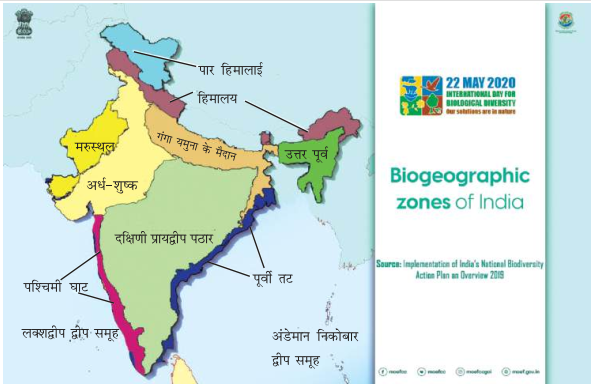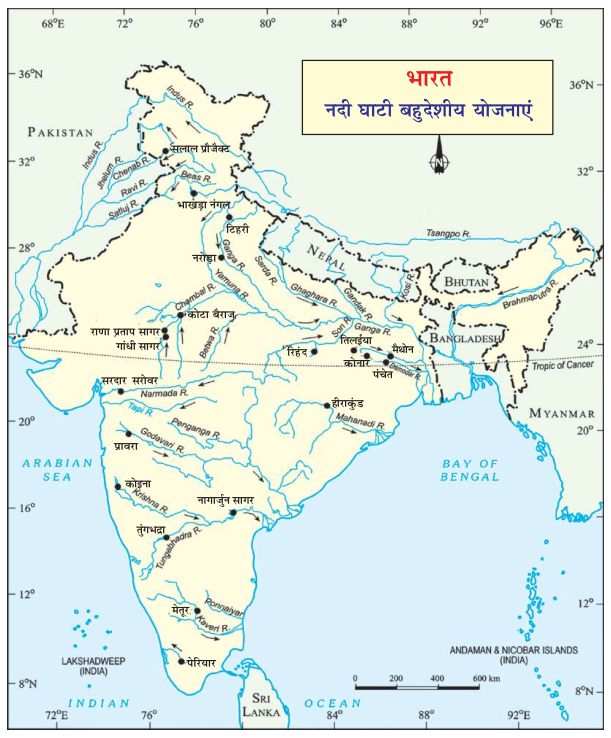
A. Comprehension Questions
(i) Answer the following questions :
-
Where did the statue of the Happy Prince stand?
The statue of the Happy Prince stood high above the city, on a tall column. -
How was the statue decorated?
The statue was gilded all over with thin leaves of fine gold, had two bright sapphires for eyes, and a large red ruby glowed on his sword hilt. -
Where was the Swallow going?
The Swallow was going to Egypt. -
Why did the swallow put up between the feet of the Happy Prince?
The Swallow put up between the feet of the Happy Prince because it seemed like a fine position with plenty of fresh air. -
Where were the drops coming from?
The drops were coming from the eyes of the Happy Prince; they were his tears. -
Why was the Happy Prince crying?
The Happy Prince was crying because, from his high position, he could see all the ugliness and misery in his city, and though his heart was made of lead, he could not choose but weep. -
Describe the seamstress in the words of the prince.
The prince described the seamstress as a poor woman with a thin and worn face, and coarse, red hands, all pricked by the needle. She was embroidering flowers on a satin gown. -
Why was the seamstress’ little boy crying?
The seamstress’ little boy was crying because he was ill with a fever and was asking his mother for oranges, but she had nothing to give him but river water. -
How did both the Happy Prince and the Swallow help the seamstress?
The Happy Prince asked the Swallow to take the ruby from his sword hilt to the seamstress. The Swallow plucked out the ruby and laid it on the table beside the woman’s thimble. -
Why did the Swallow feel warm?
The Swallow felt warm, despite the cold, because he had done a good action by helping the seamstress. -
What troubled the young man in the garret?
The young man in the garret was troubled because he was trying to finish a play for the Director of the Theatre but was too cold to write, as there was no fire in the grate, and hunger had made him faint. -
How was the young man helped?
The Happy Prince asked the Swallow to pluck out one of his sapphire eyes and take it to the young playwright. The Swallow did so, and the young man could then sell it to buy firewood and finish his play. -
Why was the match girl crying?
The match girl was crying because she had let her matches fall in the gutter, and they were all spoiled. Her father would beat her if she did not bring home some money. -
The Swallow said to the prince, “I will stay with you always.” Why?
The Swallow said this because the Prince had given away both his sapphire eyes to help others and was now blind. The Swallow felt compassion and decided to stay with him. -
How did the poor Swallow manage to live in so much cold?
The poor Swallow managed to live by picking up crumbs outside the baker’s door when the baker wasn’t looking and by trying to keep himself warm by flapping his wings. He stayed because he loved the Prince too well. -
Why was the statue of the Happy Prince pulled down?
The statue of the Happy Prince was pulled down because the Mayor and Town Councillors thought it looked shabby (the ruby and sapphires were gone, and it was no longer golden) and was little better than a beggar. The Art Professor also said that as it was no longer beautiful, it was no longer useful. -
What were the two most precious things in the city?
The two most precious things in the city were the leaden heart of the Happy Prince and the dead bird (the Swallow).
(ii) Answer the following in about 50 words each :
-
Why was the prince called the Happy Prince?
The prince was called the Happy Prince because when he was alive, he lived in a palace where sorrow was not allowed to enter. His courtiers called him so, and he was indeed happy, unaware of the misery outside his palace walls. -
“I cannot choose but weep.” Why did the Happy Prince say so?
The Happy Prince said this because after his death, his statue was placed so high that he could see all the ugliness and misery of his city. Though his heart was made of lead, the sight of suffering was so overwhelming that he felt compelled to weep. -
Comment on the remark – ‘The living always think that gold can make them happy.’
This remark, made by the Happy Prince, reflects a common human belief that material wealth, symbolized by gold, is the key to happiness. He implies that people often pursue riches, believing it will solve their problems and bring joy, overlooking other, perhaps more important, sources of contentment. -
Why did the Mayor dislike the statue so much?
The Mayor disliked the statue because it had become shabby. The ruby was gone from its sword, its sapphire eyes were missing, and it was no longer golden. He considered it “little better than a beggar” and, importantly, no longer beautiful and therefore no longer useful in his view. -
Write a short note on the sufferings of the poor people in the city.
The poor people in the city suffered greatly. A seamstress’s son was ill and thirsty with no medicine or fruit. A young playwright was cold and hungry. A little match girl was crying for fear of being beaten. Starving children were seen in dark lanes, and homeless boys tried to keep warm under a bridge. -
What is the message conveyed by the author?
The author conveys the message that true happiness and beauty lie in compassion, self-sacrifice, and love for others. Material wealth and outward appearances are superficial, while acts of kindness and helping those in need are the most precious things and are valued even by God.
B. Vocabulary Exercises
(i) Look at the following sentence : …Homonyms.
Now fill in the blanks with words meaning both A and B:
a. A. gift / B. the time now passing -> present (already given)
b. A. riverside / B. a financial institution where money is deposited -> bank
c. A. solid and reliable / B. noise -> sound
d. A. portray / B. pull out -> draw
e. A. cause to pass down one’s throat, gulp / B. a small migratory bird -> swallow
f. A. shut / B. near -> close
g. A. fireplace, framework of metal bars for holding fuel / B. rub into small pieces -> grate
h. A. try to win the love of / B. the place where legal trials take place -> court
(ii) Confusing words
Fill in the blanks choosing the correct word from the following sets :
a. You have quite drenched me.
The patient is sleeping, please keep quiet.
b. The poet’s heart was filled with joy.
Do not hunt the hart. You can be punished for it.
c. Winter dryness makes her skin coarse.
You need good marks to get into this university course.
d. There is no fire in the grate.
She takes great care of her kids.
e. Do not wander in the rain.
The Pyramids are a great wonder.
f. They pulled down the statue of the Happy Prince.
Penalties are laid down in the statute.
(iii) Match the following words with their antonyms :
-
above – below
-
plenty – scarcity
-
bright – dull
-
sorrow – happiness
-
entrance – exit
-
personal – public (or reject, if considering “accept” as its opposite)
-
coarse – smooth
-
delicious – insipid
-
strange – familiar
-
shabby – neat
-
friendly – hostile
-
arrival – departure
-
disease – health
-
angel – devil
-
accept – reject
-
agree – disagree
-
misery – joy (or happiness)
-
appear – vanish
-
create – destroy
C. Grammar Exercises
(i) Look at these sentences… of and off
Fill in the blanks using these two prepositions :
-
Send me a cup of tea.
-
I washed the dirt off my hands.
-
Get off the bus at the next stop.
-
Send me a copy of this story.
-
Did you get a day off this week?
-
She died of heart failure.
-
It was nice of you to send me flowers.
-
He fell off the bed and broke his leg.
-
He is a member of the Parliament.
-
She is better off without him.
(ii) Rewrite the following sentences in their past perfect and past perfect continuous form:
-
The town has made all preparations.
-
Past Perfect: The town had made all preparations.
-
Past Perfect Continuous: The town had been making all preparations.
-
-
He passed by the cathedral tower.
-
Past Perfect: He had passed by the cathedral tower.
-
Past Perfect Continuous: He had been passing by the cathedral tower.
-
-
You have done a good action.
-
Past Perfect: You had done a good action.
-
Past Perfect Continuous: You had been doing a good action.
-
-
I have come to bid you goodbye.
-
Past Perfect: I had come to bid you goodbye.
-
Past Perfect Continuous: I had been coming to bid you goodbye.
-
-
He slept at the prince’s feet.
-
Past Perfect: He had slept at the prince’s feet.
-
Past Perfect Continuous: He had been sleeping at the prince’s feet.
-
-
The Swallow flew over the great city.
-
Past Perfect: The Swallow had flown over the great city.
-
Past Perfect Continuous: The Swallow had been flying over the great city.
-
-
They pulled down the statue of the Happy Prince.
-
Past Perfect: They had pulled down the statue of the Happy Prince.
-
Past Perfect Continuous: They had been pulling down the statue of the Happy Prince.
-
-
He picked up crumbs outside the baker’s door.
-
Past Perfect: He had picked up crumbs outside the baker’s door.
-
Past Perfect Continuous: He had been picking up crumbs outside the baker’s door.
-
-
They melted the statue in a furnace.
-
Past Perfect: They had melted the statue in a furnace.
-
Past Perfect Continuous: They had been melting the statue in a furnace.
-
-
The poor little Swallow grew colder and colder.
-
Past Perfect: The poor little Swallow had grown colder and colder.
-
Past Perfect Continuous: The poor little Swallow had been growing colder and colder.
-
(iii) Punctuate the following paragraph :
Jack shouted back at his accuser, “You want to massacre 150,000 people for nothing!” Spitting out his words with fury, Roger, the senior officer in the room, shouted, “I have never seen such a gutless general like you, Jack!”
(iv) Given below is the list of adverbs used in this lesson. Make adjectives and use them in sentences.
-
brilliantly -> brilliant
-
Sentence: The diamond shone with a brilliant light.
-
-
quickly -> quick
-
Sentence: He made a quick decision.
-
-
nervously -> nervous
-
Sentence: The nervous student waited for his results.
-
-
brightly -> bright
-
Sentence: The sun shone brightly in the clear sky.
-
-
eagerly -> eager
-
Sentence: The children were eager to open their presents.
-
-
carefully -> careful
-
Sentence: She gave a careful answer to the difficult question.
-
-
critically -> critical
-
Sentence: He made a critical analysis of the situation.
-
-
simply -> simple
-
Sentence: It was a simple solution to a complex problem.
-
-
suddenly -> sudden
-
Sentence: There was a sudden clap of thunder.
-
-
lovingly -> loving
-
Sentence: She gave her child a loving embrace.
-
D. Pronunciation Practice
(This section asks you to say words aloud, focusing on the /ʃ/ (sh) vs /s/ sounds. No written answer required other than noting the sounds.)
E. Creative Writing and Extended Reading
(These are prompts for your own writing and activities, so I’ll provide guidance or ideas rather than definitive answers.)
-
Imagine yourself to be the Happy Prince. Write your autobiography.
-
Idea: Start with your life as a human prince in the Palace of Sans-Souci, your ignorance of sorrow. Then describe being made into a statue, your elevated view, the misery you witnessed, your desire to help, your interactions with the Swallow, the sacrifices you made (ruby, sapphires, gold), and your final moments.
-
-
Imagine yourself to be the Mayor of the city. Write your experiences vis-à-vis the statue of the Happy Prince.
-
Idea: Begin with your initial admiration for the beautiful statue. Describe your growing concern as it becomes “shabby.” Detail your discussions with the Town Councillors, your decision to pull it down because it’s “no longer beautiful” and thus “no longer useful.” You might end with the discovery of the unbroken lead heart, perhaps hinting at a dawning, or lack of, understanding.
-
-
Prepare a speech on the topic : Service of Mankind is the Best Service
-
Idea: Introduction (importance of service). Body paragraphs (examples from the story of Happy Prince and Swallow, other real-life examples, benefits of service to both giver and receiver). Conclusion (call to action, reiterate main point).
-
-
Discuss the topic : “What Constitutes Real Happiness?” with your class-fellows in the light of your study of the story ‘The Happy Prince.’
-
Points for discussion: Is it wealth (like the Prince had initially)? Is it beauty (like the statue was)? Or is it compassion, empathy, helping others, sacrifice (as shown by the Prince and Swallow)? Contrast superficial happiness with deeper, meaningful happiness.
-
-
Every good short-story has a message in it. Read at least 5 short stories written by different authors. Try to find the message contained in each story.
-
(This is an activity for you to do.)
-
-
Write about:
-
– What you feel when you see the statue of a person.
-
Ideas: Admiration, curiosity about their life, respect for their achievements, a sense of history, sometimes sadness if the statue is neglected.
-
-
– What it would say if it had life
-
Ideas (based on Happy Prince): It might speak of what it has witnessed, the changes over time, the people it has seen, its own story, or perhaps a message for the current generation.
-
-
– What you think about the life of the person whose statue it is.
-
Ideas: Reflect on their contributions, their impact, whether they lived up to the ideals the statue represents, the lessons from their life.
-
-
Just a little fun :-
Ned calls his wife his counter-part
With truth as well as whim ;
Since every impulse of her heart
Runs counter still to him.
(This is a humorous verse playing on the word “counter”.)


